In which rooms should laminate flooring be used?
This finishing material can be used in the bedroom, and in the living room, and in the "walk-through" areas of the apartment, and in areas with difficult operating conditions. The main thing is to choose the right look for it.
Look first how to choose a quality laminate.
- Living room. The main purpose of the laminate in the interior of the living room is decorative: it should emphasize the general style and, possibly, highlight separate areas, for example, for reading, relaxing or watching TV.
- Bedroom and nursery. Here, a coating with aesthetically attractive properties is suitable, while performance is not so important. For use in living rooms, only materials marked with an environmental safety symbol are recommended.
- Hallway Laminate in the interior of the hallway, on the contrary, must be wear-resistant and withstand heavy loads - this is the most "passage" place in the house.
- Kitchen. Resistance to elevated temperature, the action of acids and other aggressive substances - these are the qualities that a laminate should have for the interior of a kitchen, since the conditions in this room are very specific.
Laminate color and design
The use of various colors of the finishing coating allows you to get interesting interior effects, and at the same time straighten out certain flaws of the room.
- White laminate in the interior. Allows you to make the space brighter and visually spacious. Suitable for shaded rooms and rooms with a lack of natural light.
- Black laminate in the interior it is used in those cases when they want to achieve graphic quality, effective presentation of furniture and decorative elements. Suitable for modern interior styles - techno, pop, loft.
- Gray laminate in the interior allows you to create a neutral background for furniture and other active elements of the environment. Against such a background, bright color accents look advantageous.
To the above colors, you must add two more very popular shades.
- Interior with brown laminate possesses such quality as traditionality. It suits most styles of room decoration, it is perceived as neutral, and, depending on the saturation and shade, it can both increase the room visually and slightly reduce it.
- Recently also popular wenge - the laminate in the interior of such a tone is similar in properties to black, but has an expressive drawing of natural wood.
Laminate in the interior of the apartment: surface types
When choosing a coating for decoration, they are primarily oriented towards appearance. In the production of finishing material, it is possible to give it any pattern, imitate the surface of stone, wood, metal, leather, as well as apply any pattern. Another important selection criterion is the surface of the plates. The appearance, its “naturalness" and expressiveness depend on it. The following surface types are distinguished:
- Tree. The smooth surface has small bulges and depressions that mimic the pores of natural wood.
- Aged tree. On the surface reproduce irregularities characteristic of boards that have been used for a long time.
- Oil. It imitates wood treated with drying oil - the surface is smooth and even.
- Gloss. The glossy laminate in the interior is similar to lacquered floors.
- Wax. The matte sheen of the wood, as if waxed and then well polished.
- Natural texture. The surface reproduces the surface of a natural material that is simulated. It can be wood, stone, leather.
Laminate "under the oak" in the interior
The appearance of the material, and, ultimately, the interior, depends on its color and texture, as well as on which material was chosen as the “source” and taken as a model for imitation.
Of all the wood species, oak is the most attractive in quality and durability; therefore, its imitations are in great demand. Natural oak has many shades, which allows you to choose the material for any interior.
The greatest opportunities for design imagination are provided in the interiors by a laminate under a light oak. It creates a favorable background for any experiment. It looks spectacular furniture in contrasting shades or bright colors.
Laminate "white oak" in the interior goes well with walls of snow-white hues, the interior with a laminate "gray oak" can be either neutral or quite bright - for example, when combining a gray floor with colored walls or a large pattern on the wallpaper. Laminate "bleached oak" in the interior of the Scandinavian type can be used both as flooring and for wall decoration.
Non-standard surfaces for decoration: walls and ceiling
Laminate on the floor allows for a modest budget to get flooring for the interior in any style, from classic to modern "techno". But this is by no means the only option for using this material in finishing work.
Interior with laminate on the walls
In any interior, a light laminate, "crossed" from floor to wall, will expand the space, it will seem lighter. Using a dark laminate in the interior will help to highlight individual sections of the walls, for example, by the fireplace or near the TV panel.
On the walls of the living room, he will highlight functional areas, in the kitchen he will serve as an apron over the work surface, in the bedroom he will put an emphasis on the wall near the head of the bed, in the hallway he will close the wall that is dirty from contact with outer clothing.
Laminate ceiling in the interior
The first obvious advantage of such a ceiling finish is its originality. Few people decide to try this option, although in fact it has only one minus: a rather high cost. Pluses more. Firstly, the appearance of such a ceiling is no worse than the appearance of a ceiling from euro-lining, and the cost is lower. Secondly, such a ceiling increases sound insulation.
Laminate Laying Options
The perception of the room and the interior as a whole largely depends on how the plates are laid in relation to each other.
Standard methods for laying laminate flooring:
- Straight. Laying “in a straight line” emphasizes the direction in which the flooring is conducted. The proportions of a long narrow room can be corrected by placing the plates perpendicular to the long wall.
- Diagonal. The laying direction at an angle to the direction of one of the walls is usually used in non-standard-shaped rooms. Also, laying the laminate diagonally in the interior is used to emphasize zoning.
- Curly. Laying with a "herringbone" or squares allows you to create the illusion of parquet, but it requires a special laminate with small strips and special locks for engaging at right angles.
Laminate Laying Schemes
Types of locks for styling
The plates are equipped with locks so that they can be fastened when laying between themselves. There are three types of locks:
- Lock. The protrusion on one plate is connected with the recess on the other, matching the protrusion in shape.The main disadvantage is that the mount wears out quickly. It is impossible to disassemble it and assemble it in another place.
- Click The design of the lock allows you to "snap" it by connecting the plate at an angle. Over time, the castle does not diverge. The coating can be disassembled, moved to another place and reassembled.
- Uniclic Assembly is quicker and easier than with other types of locks. Laminate quick step made using this technology in the interior of any room looks very worthy. The coating is absolutely even, suitable for disassembly and installation in a new place.
Laminate is also distinguished by the presence or absence of a chamfer - a beveled edge along the plate. Chamfers are used in the construction of wooden floors to make cracks less noticeable and to protect the tree from chips. Chamfered laminate in the interior is more like natural wood.
Photo of interiors with laminate in various colors
Below are examples of the use of different types of laminate in the decoration of apartments.
Photo 1. Dark brown flooring combines the kitchen and living room spaces.
Photo 2. The shade of “bleached oak” allows you to create a light, “transparent” interior.
Photo 3. The light tone of the floor is perfectly combined with a darker shade of the same material on one of the walls.
Photo 4. The flooring in the bedroom looks indistinguishable from natural wood.
Photo 5. Laminate on the floor, walls and ceiling is combined in color and is the basis of the original interior of the living room.
Photo 6. Bright and cheerful interior is based on a combination of yellow tones in the decoration of the walls, green - in furniture and juicy warm shades of mahogany flooring.
Photo 7. The coating under the old boards brings elements of the Scandinavian style into the interior of the hallway.
Photo 8. The noble combination of the color of natural wood flooring with deep blue in textile elements brings a touch of luxury to the decor.
Photo 9. “Direct” laying of plates emphasizes the line of the work surface in the kitchen, and its natural shade gives warmth to the interior.


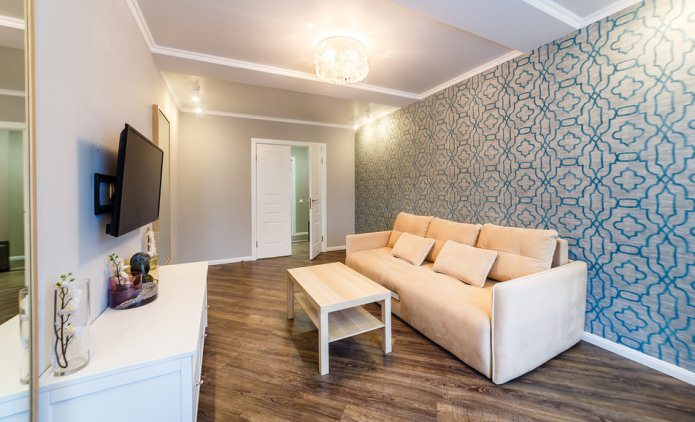
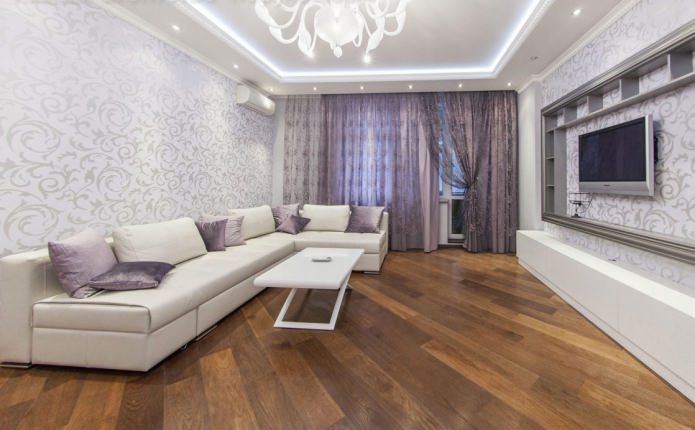
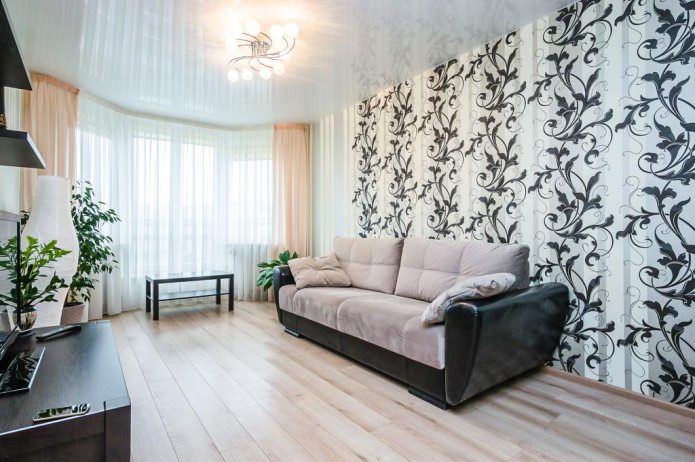
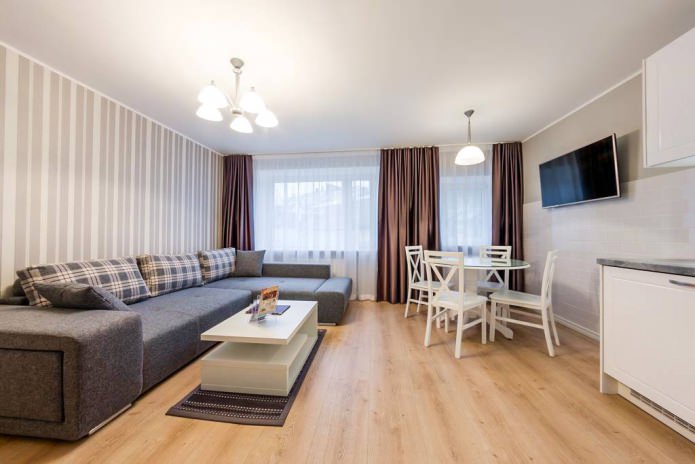

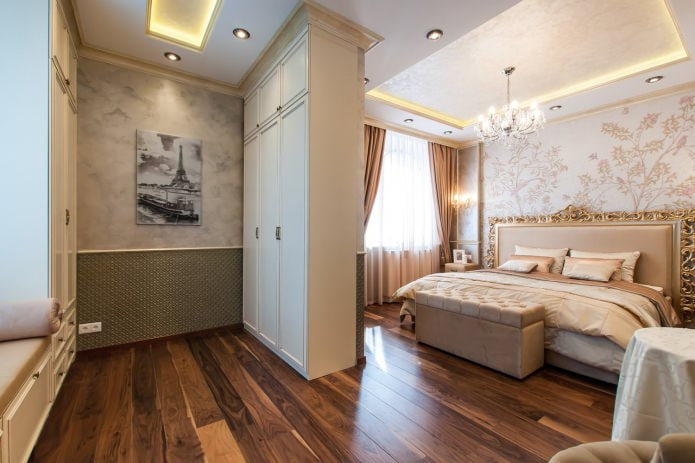
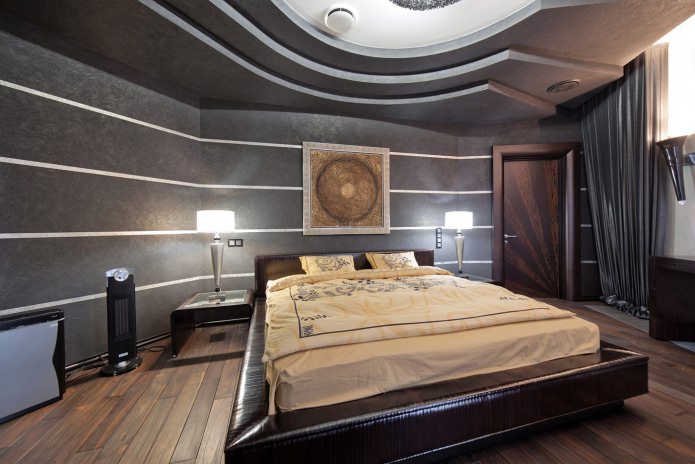
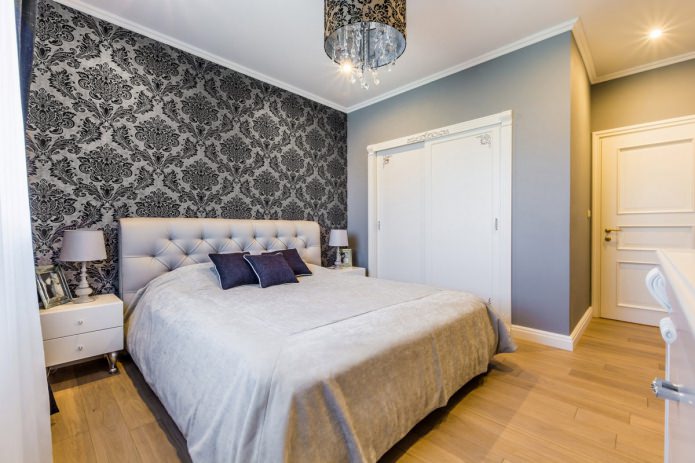
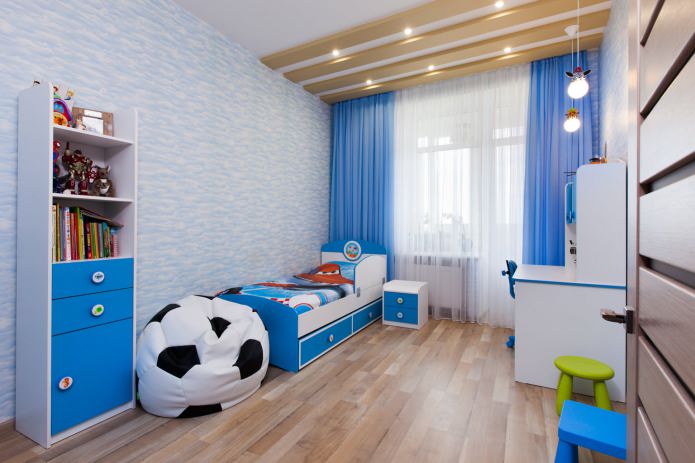


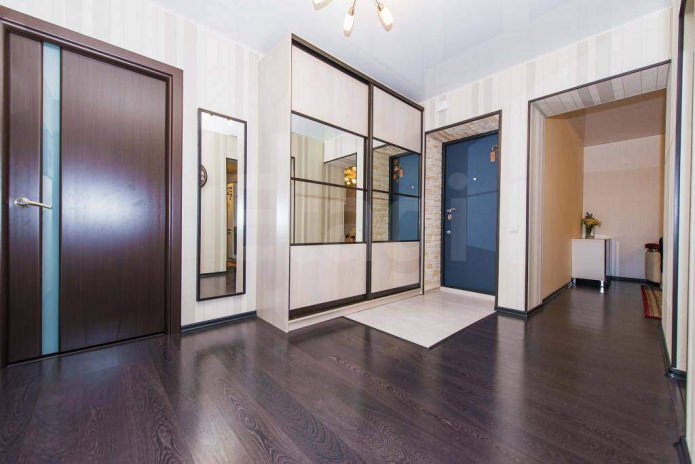
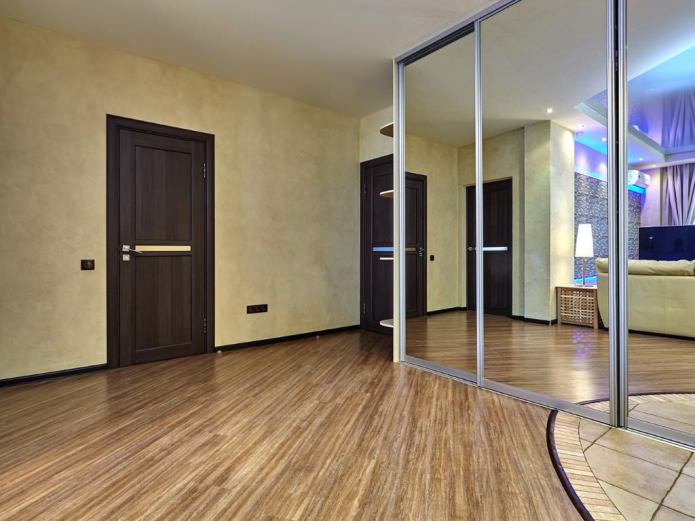
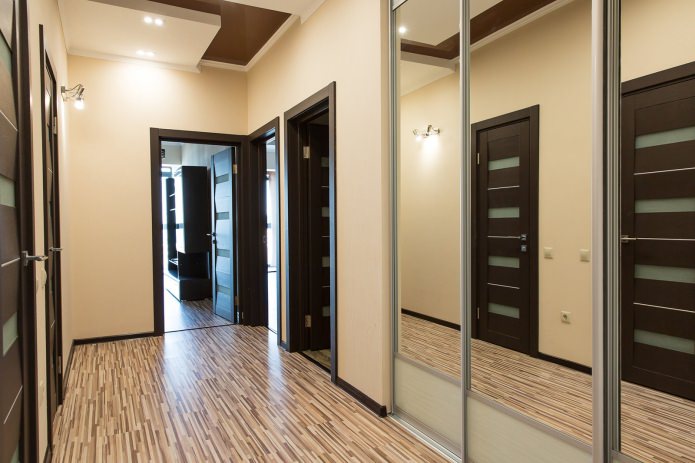
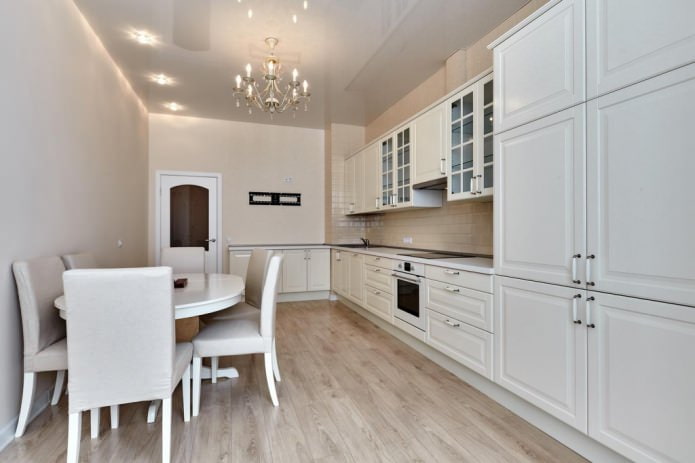
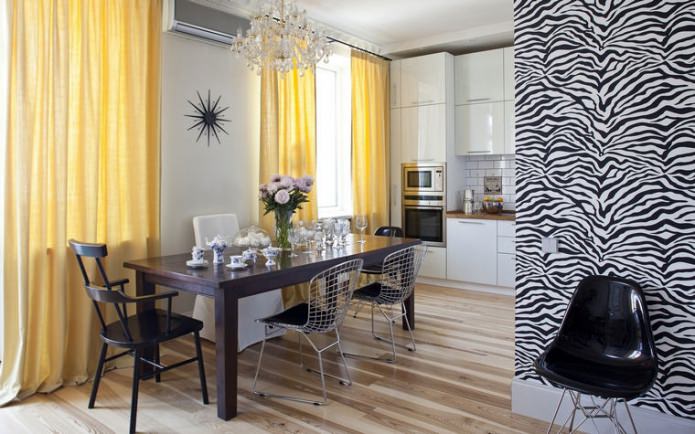
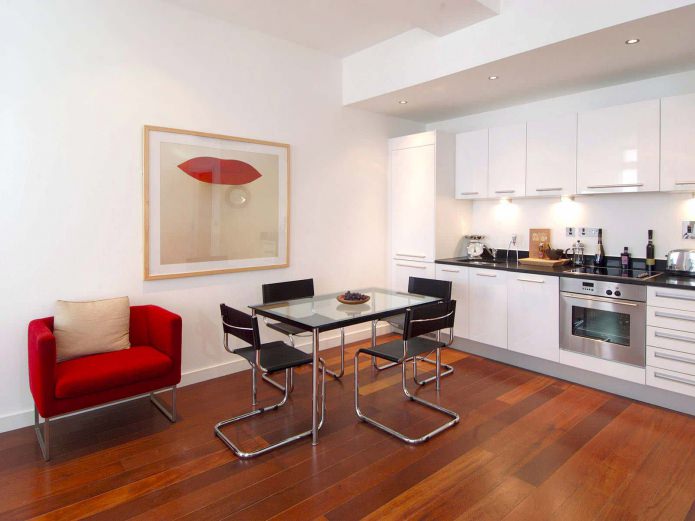

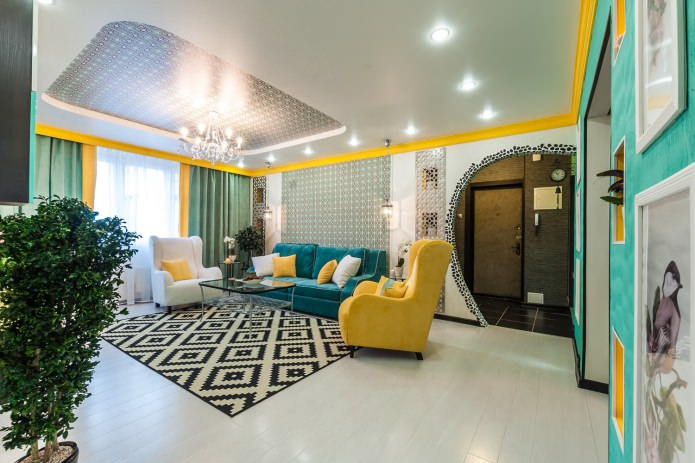
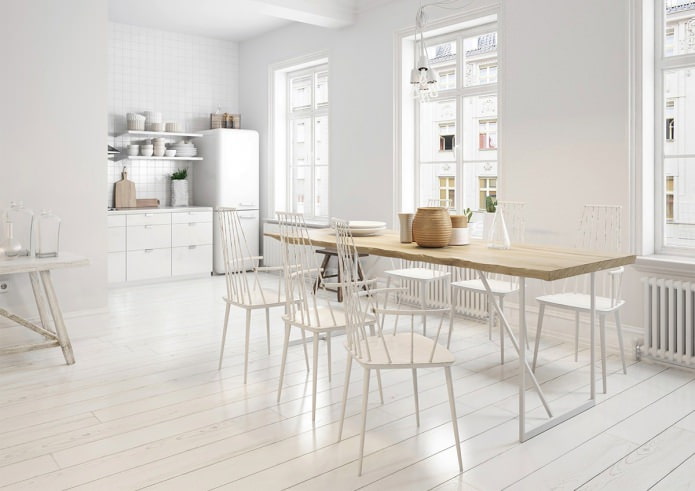
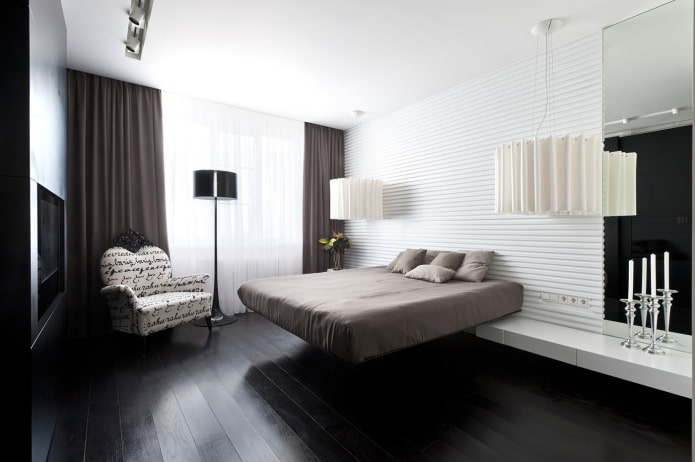
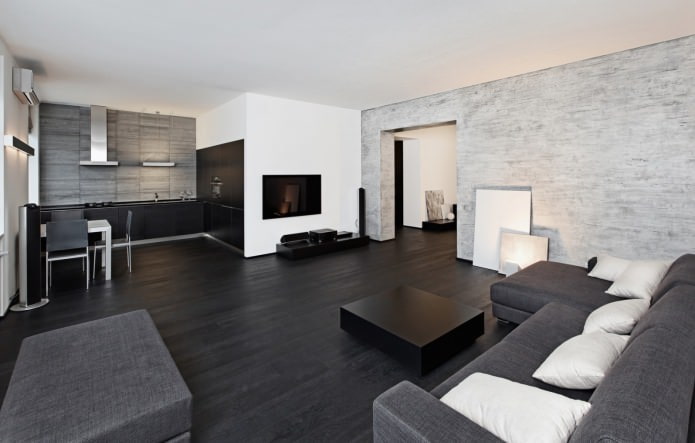
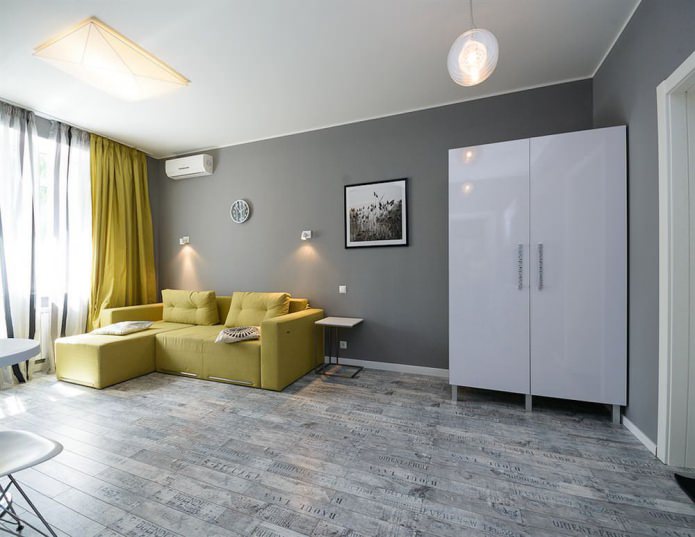
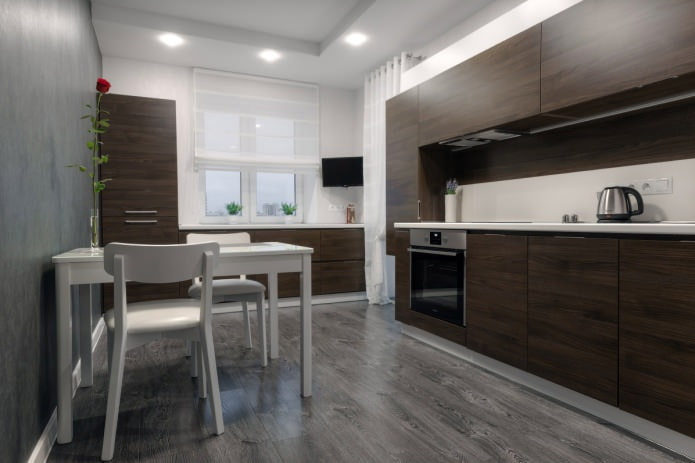
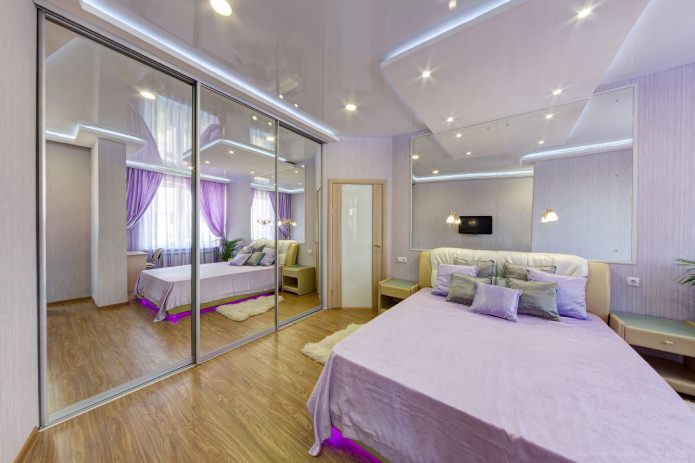
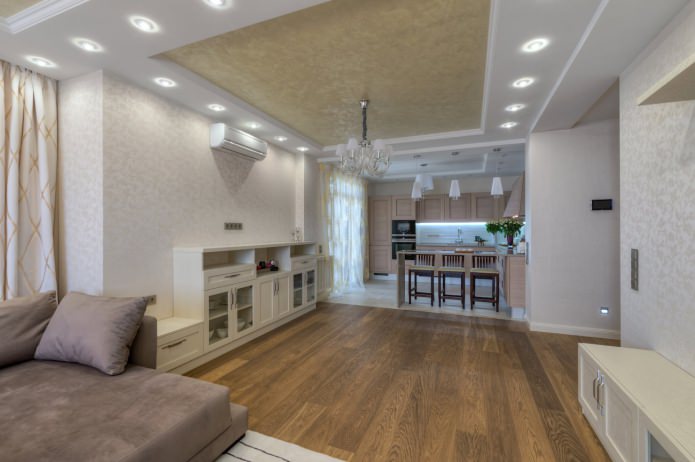
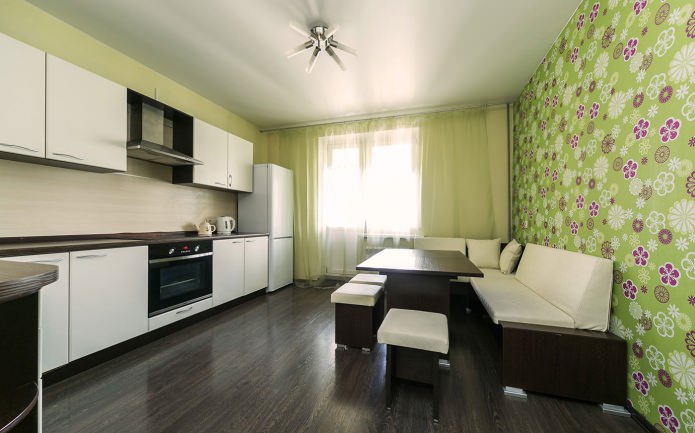
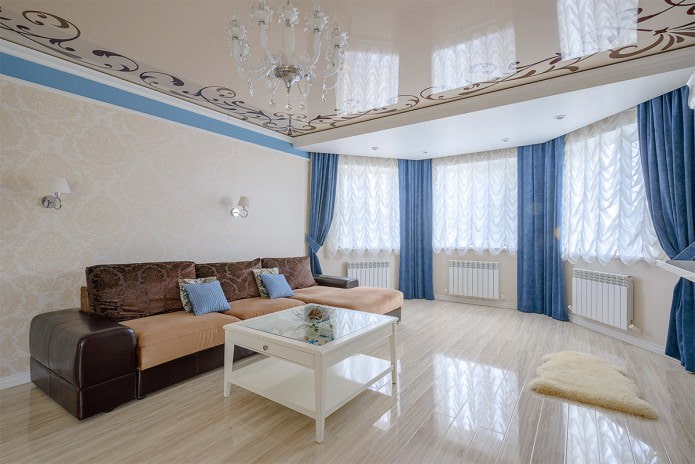
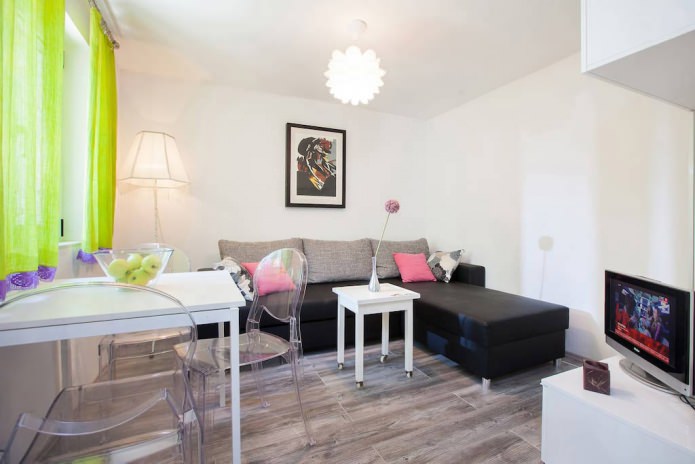

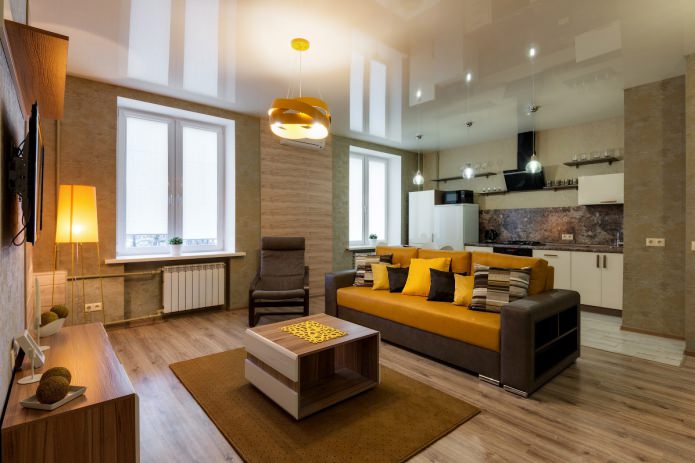
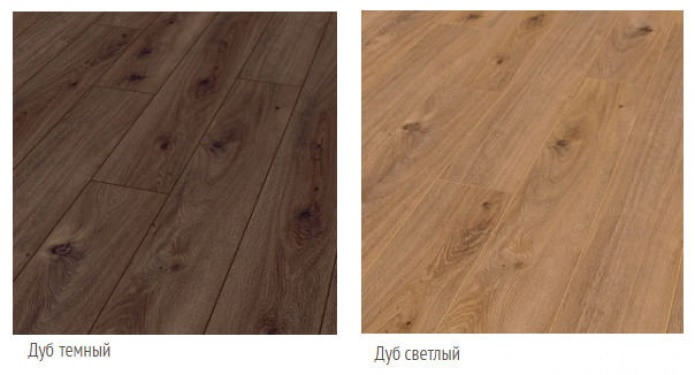
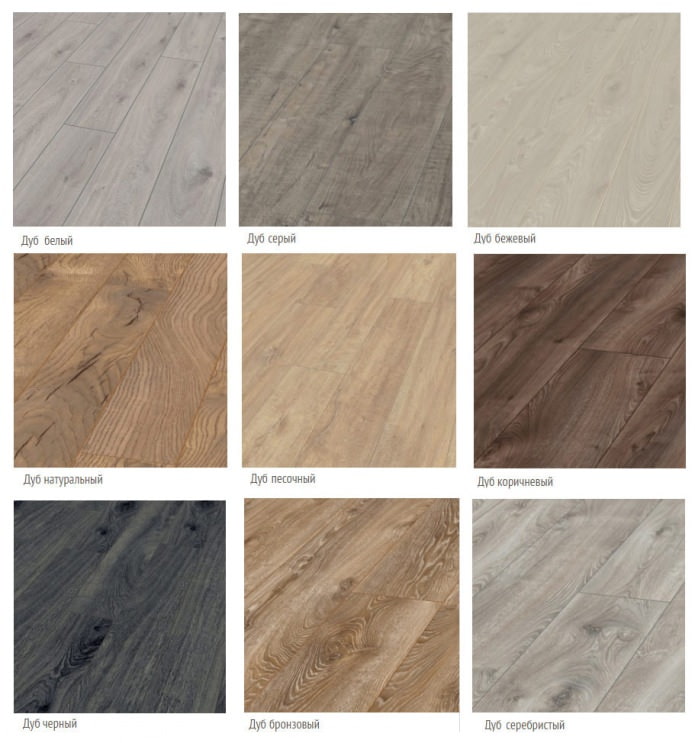

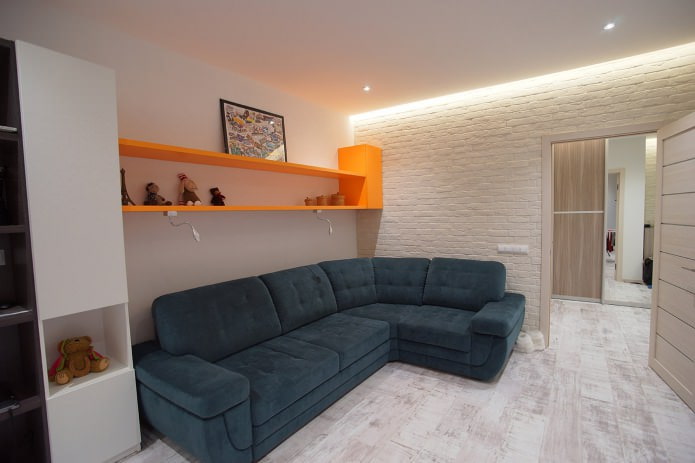

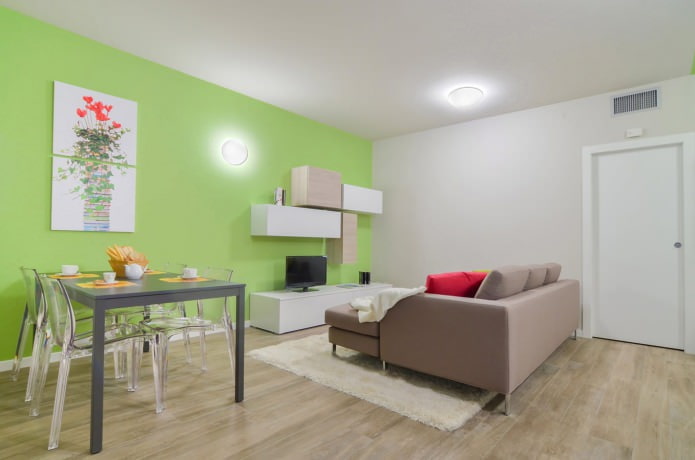
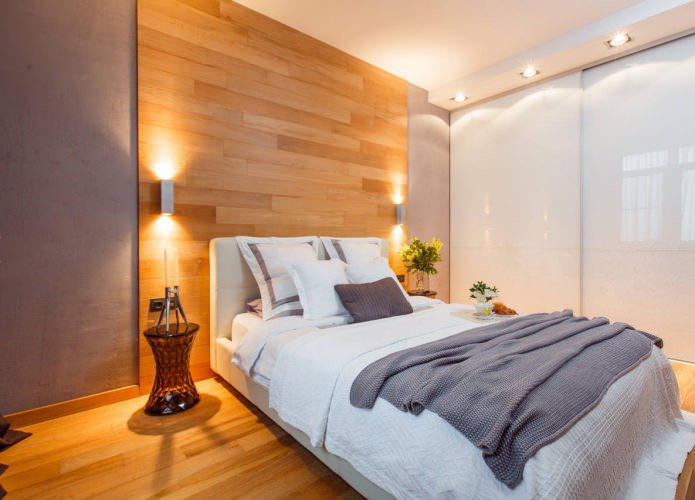
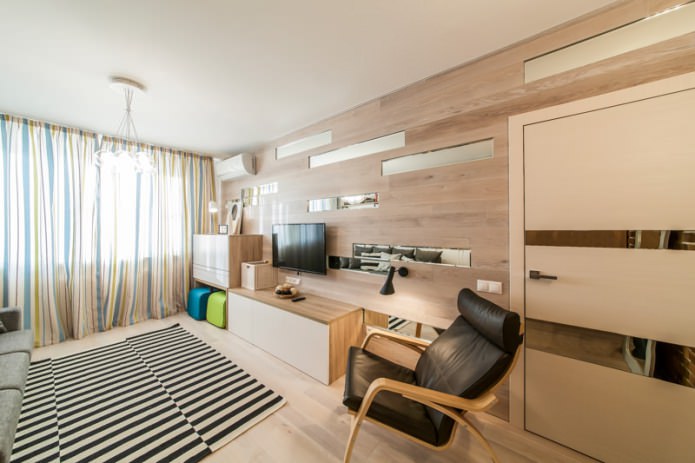
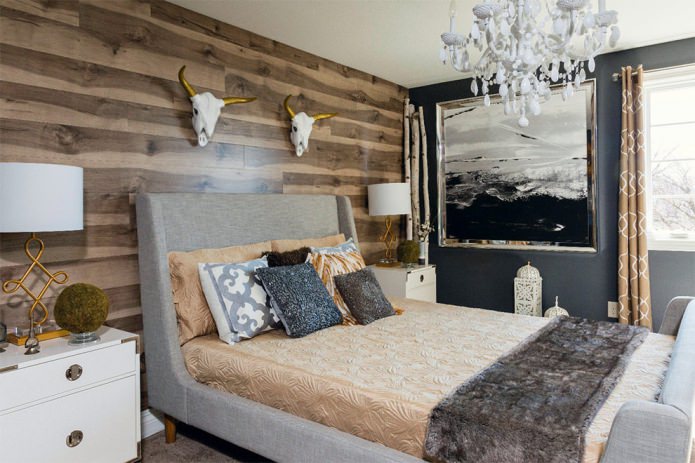
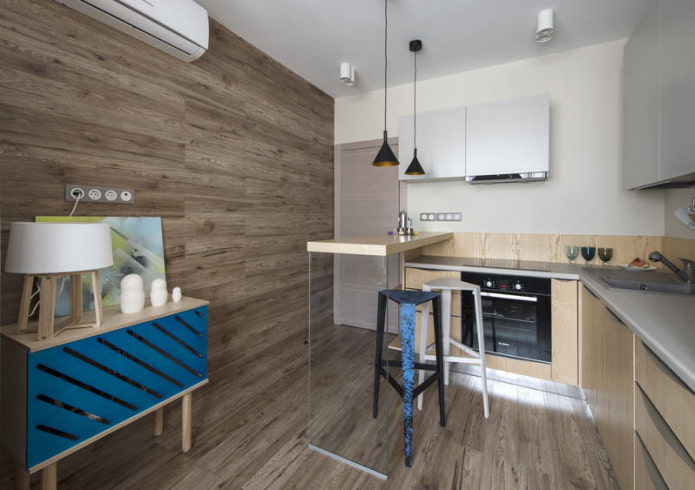
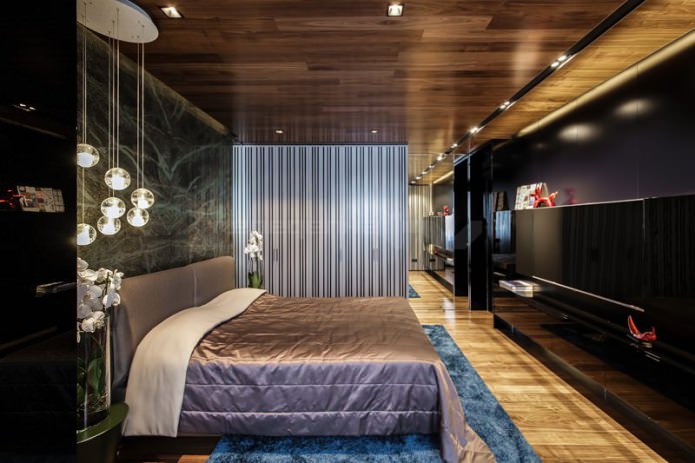
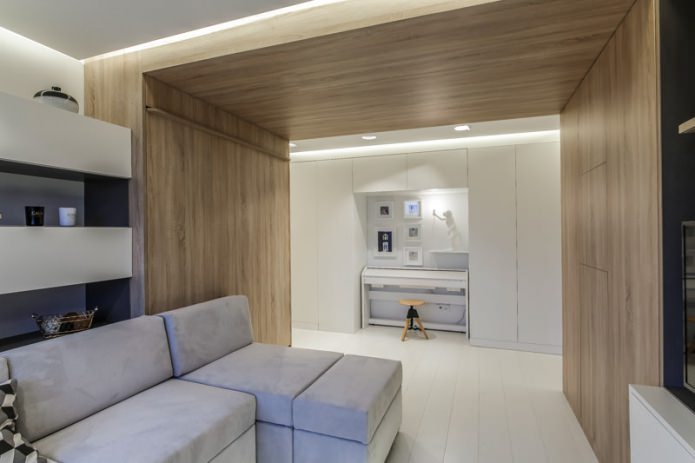

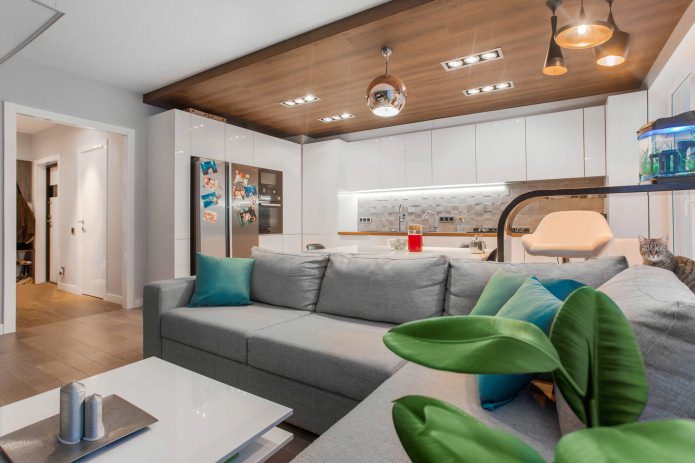

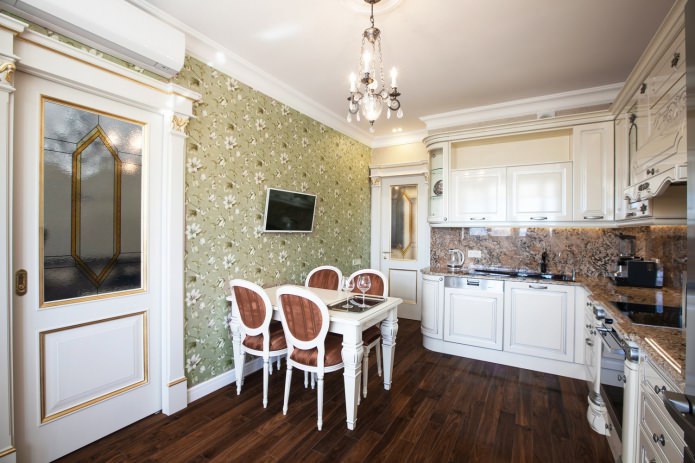
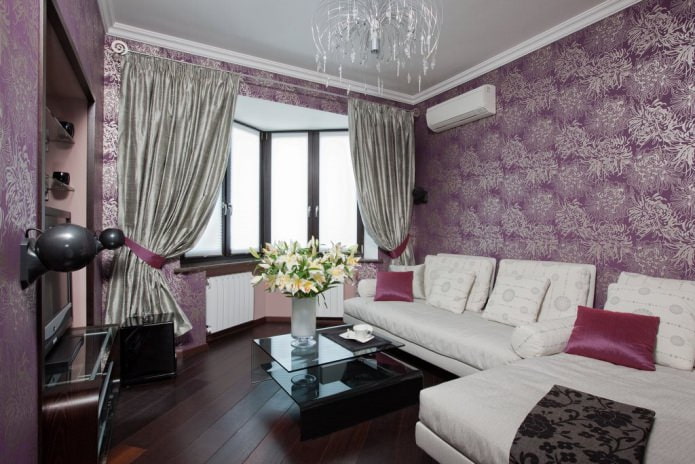
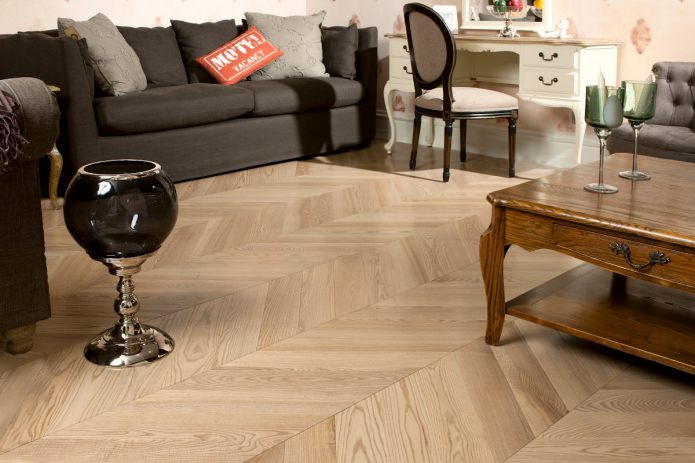
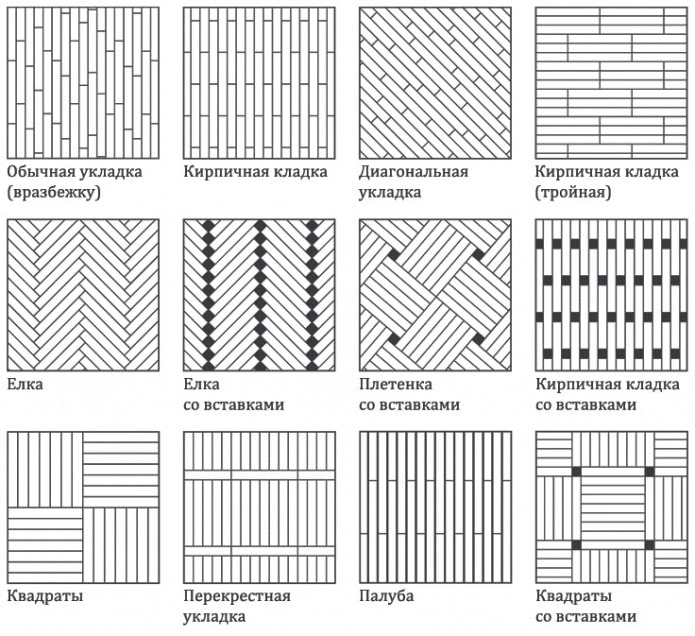
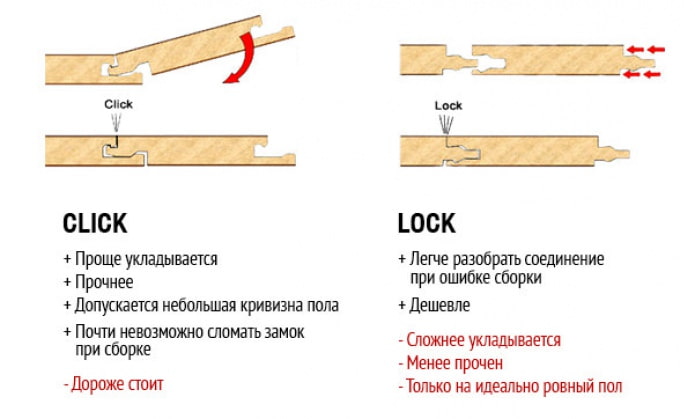
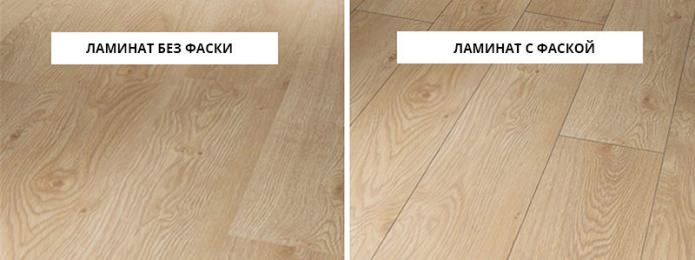
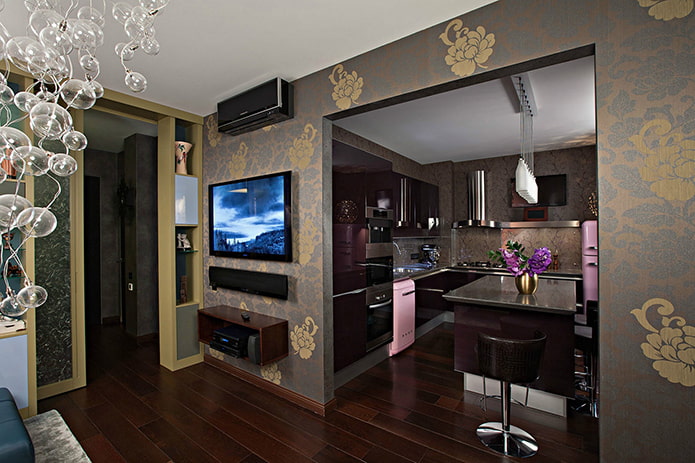
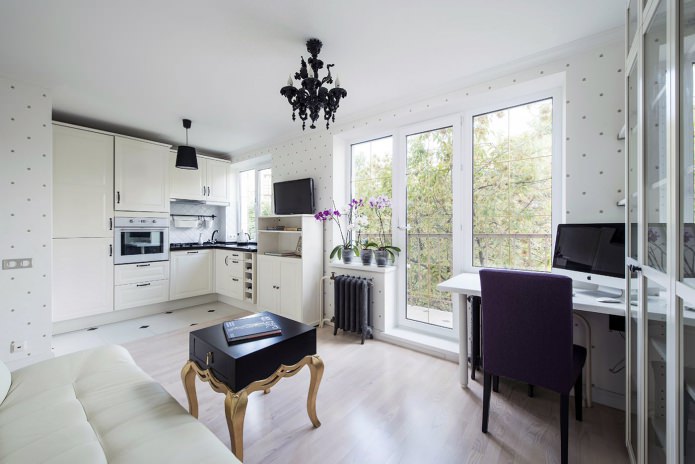
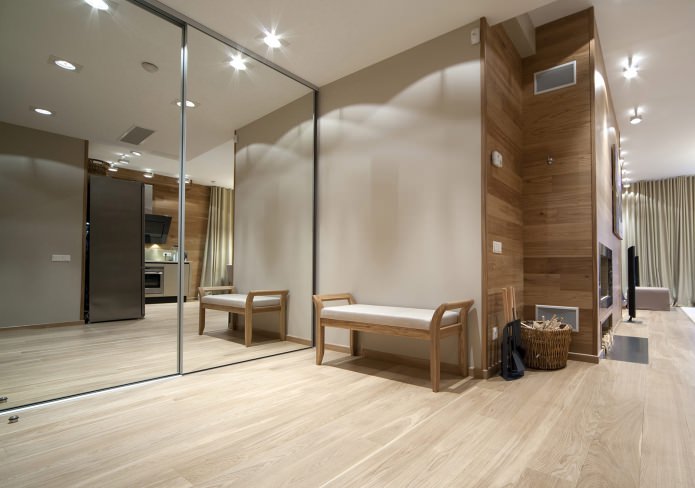

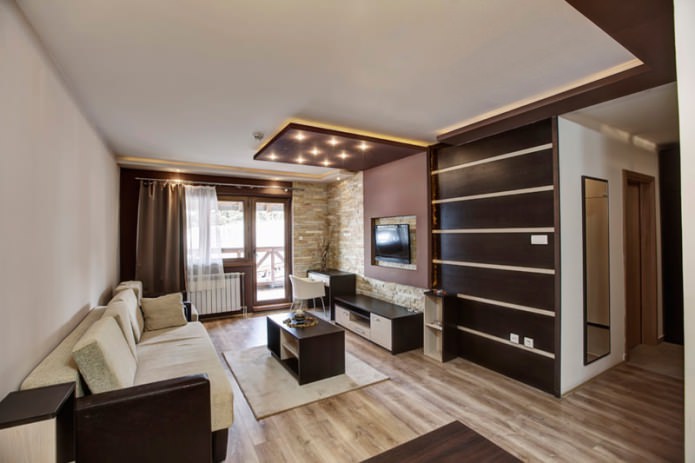
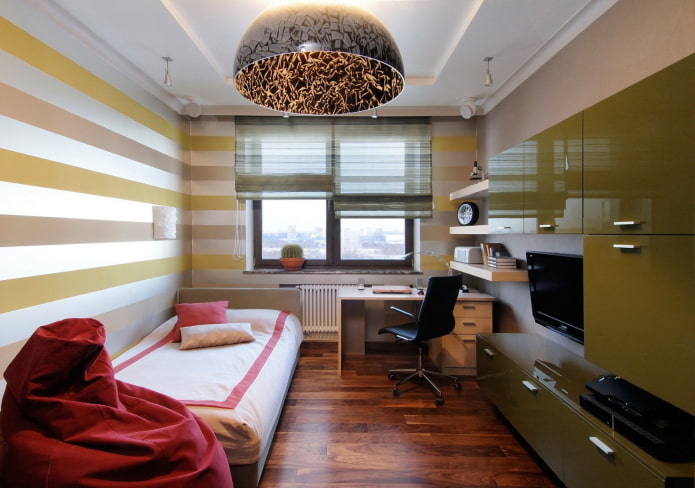
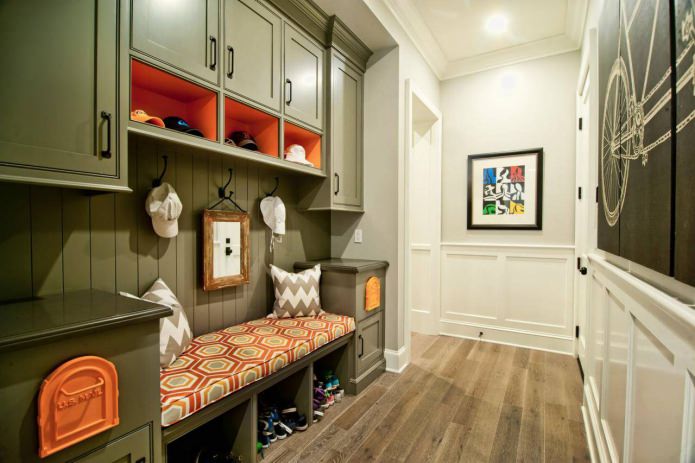
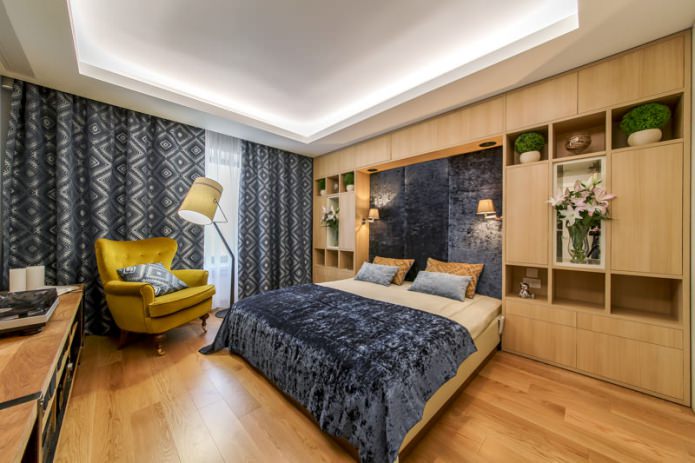
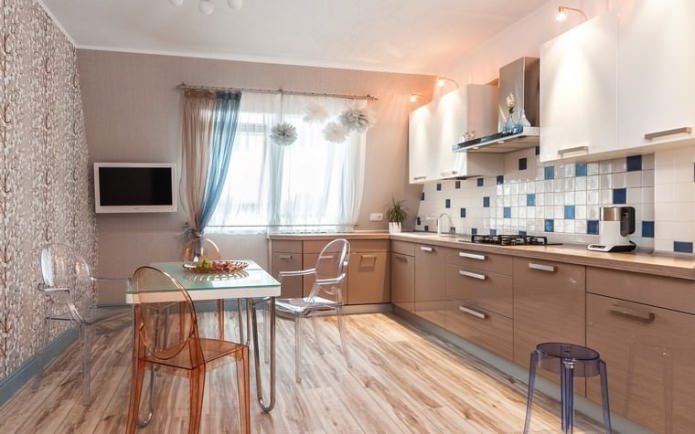

 Top 10 Trends in Interior Design 2020
Top 10 Trends in Interior Design 2020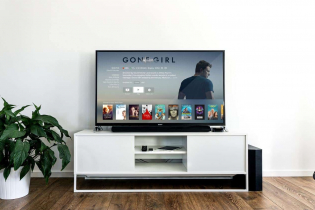 Rating of cheap TVs with Smart-TV
Rating of cheap TVs with Smart-TV New Year's LED garlands on AliExpress - we disassemble while it's hot, so that the house is bright
New Year's LED garlands on AliExpress - we disassemble while it's hot, so that the house is bright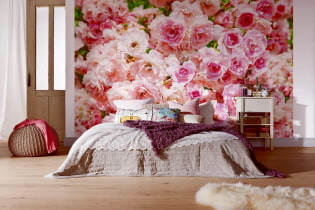 Wall mural with flowers in the interior: living wall decor in your apartment
Wall mural with flowers in the interior: living wall decor in your apartment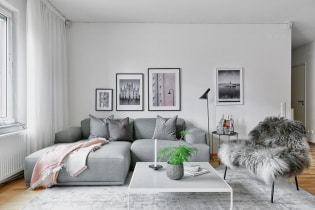 Gray sofa in the interior: views, photos, design, combination with wallpaper, curtains, decor
Gray sofa in the interior: views, photos, design, combination with wallpaper, curtains, decor Interior in peach tones: meaning, combination, choice of finishes, furniture, curtains and decor
Interior in peach tones: meaning, combination, choice of finishes, furniture, curtains and decor